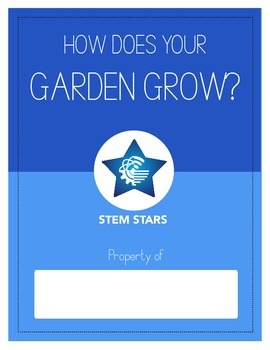How Does Your Garden Grow? - STEM Lesson Plan
STEM Stars
298 Followers
Grade Levels
K - 2nd
Subjects
Resource Type
Standards
CCSS2.MD.A.1
CCSS2.MD.A.2
CCSS1.NBT.A.1
CCSS1.NBT.C.4
CCSSRI.1.1
Formats Included
- PDF
STEM Stars
298 Followers
Description
How Does Your Garden Grow? is a STEM PBL: a full 2-week lesson plan geared towards elementary level students between K and 2th grade. Using the 7E system for full student comprehension, this packet contains everything you need (besides an imagination!) to engage with your students and have a blast while teaching them the principles of gardening, plant growth, earth systems, agriculture, and math skills. A fully-detailed run-down of the activities, materials, and processes are given, along with all the referenced worksheets, math cards, teacher hand-outs, full-color matching flashcards, and a blank planning calendar for your activities. Everything is shown step-by-step, along with all of the teaching standards addressed and the lesson vocabulary to ensure everything runs smoothly.
Stem Stars is committed to taking the burden off exceptional teachers in order to let them have a life, while fostering fun, creativity, and excitement in the classroom! Check us out on Facebook athttp://www.facebook.com/stemstarsnc and on Twitter at https://twitter.com/Stem_Stars
Stem Stars is committed to taking the burden off exceptional teachers in order to let them have a life, while fostering fun, creativity, and excitement in the classroom! Check us out on Facebook athttp://www.facebook.com/stemstarsnc and on Twitter at https://twitter.com/Stem_Stars
Total Pages
Answer Key
N/A
Teaching Duration
2 Weeks
Report this resource to TPT
Reported resources will be reviewed by our team. Report this resource to let us know if this resource violates TPT’s content guidelines.
Standards
to see state-specific standards (only available in the US).
CCSS2.MD.A.1
Measure the length of an object by selecting and using appropriate tools such as rulers, yardsticks, meter sticks, and measuring tapes.
CCSS2.MD.A.2
Measure the length of an object twice, using length units of different lengths for the two measurements; describe how the two measurements relate to the size of the unit chosen.
CCSS1.NBT.A.1
Count to 120, starting at any number less than 120. In this range, read and write numerals and represent a number of objects with a written numeral.
CCSS1.NBT.C.4
Add within 100, including adding a two-digit number and a one-digit number, and adding a two-digit number and a multiple of 10, using concrete models or drawings and strategies based on place value, properties of operations, and/or the relationship between addition and subtraction; relate the strategy to a written method and explain the reasoning used. Understand that in adding two-digit numbers, one adds tens and tens, ones and ones; and sometimes it is necessary to compose a ten.
CCSSRI.1.1
Ask and answer questions about key details in a text.





